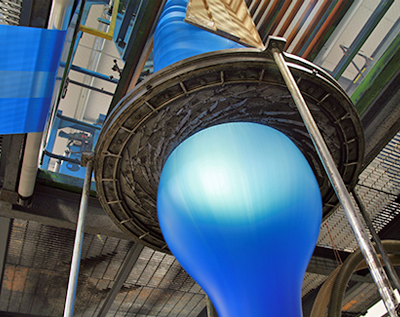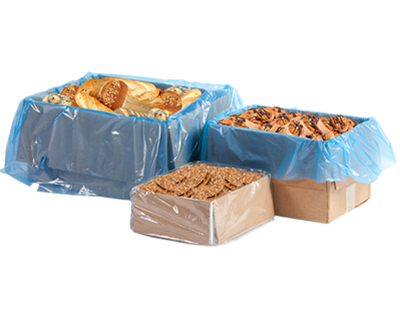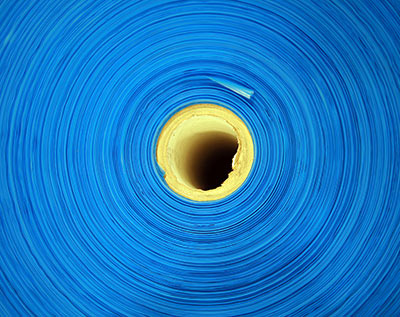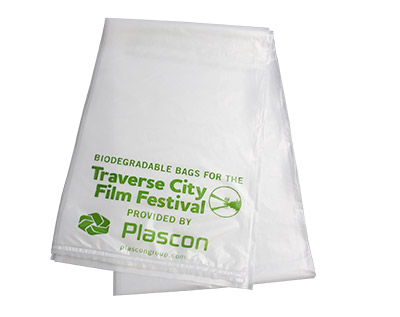Flexible Packaging Products
Blown films created with the highest level of quality and sanitation

LLDPE FILM
Linear Low Density Polyethylene Film, or LLDPE Film, provides maximum puncture and stretch resistance compared to High Density. Multi-purpose applications. LLDPE Film is the most prevalent type of film used in the industry today and can be manufactured in a wide variety of colors. Compared to traditional low-density film, linear low can be run at a lighter gauge with equal strength.

HDPE FILM
High Density Polyethylene Film, or HDPE film produces liners that are about 3 times stronger and more durable than ordinary polyethylene liners of the same thickness. USDA and FDA approved (natural colored liners).

BLENDED LLDPE/HDPE FILM
Best of both worlds, blended can liners offer the maximum puncture and tear resistance in the industry. High structural integrity in a lower gauge resulting in lower shipping, storage and warehouse costs. High versatility for multi-purpose applications including FDA/USDA, colors and use in extreme conditions.

BIODEGRADABLE* FILMS
Biodegradation* can take place with or without the presence of light, and is metabolized into biomass and humas when it returns to the environment. Plascon offers high-quality films and bags that meet the same stringent specifications as standard products – including strength and tensile properties. Available in any color, gauge, or print.
* 49.28% biodegradation in 900 days under non-typical conditions. No evidence of further biodegradation.
CERTIFIED SOLUTIONS
Plascon offers an extensive line of BRC Certified flexible packaging products that provide our valued customers with the highest level of quality, cost-effectiveness and sanitary conditions.
Plascon produces blown film in a state of the art manufacturing facility located in Traverse City, Michigan. We can produce Flat, Star Seal or Gusseted Tubing or produce individually cut bags.
Films can be from 6″ to 50″ wide (depending on seal type) and 0.8 Mil to 4.5 Mil thick (depending on resin type).
We can produce any color to meet your needs and also have the capability to add a one-color print to the film.

STAR OR X-SEAL
The star seal has become the most common type of seal in the market today. Designed without gussets, the star seal eliminates gaps along the seal where leaks can occur. This unique design allows the bag to conform more easily to the shape of the container and distributes the weight of the refuse evenly around the bag. Star seal liners maximize the bag’s carrying capacity and virtually eliminate leaks. Star Seal liners are designated in two dimensions, i.e., 40×46.

GUSSETED SEAL
A flat style bag manufactured with both sides tucked in to form gussets. Where indented, the bag has to be sealed through four layers of film, while the middle of the bag has only two layers. This leads to an inherently weak bottom seal. Gusseted seal liners are designated in three dimensions, i.e., 23x17x46.

FLAT SEAL
A flat seal is a two-dimensional bag with a bottom seal, much like a pillowcase. Flat seals are generally leak-proof but are clumsy to handle. Also, they do not conform well to the shape of most trash receptacles. Flat seal liners are designed in two dimensions, e.g., 40×46.
Learn More About the Details
Thickness Measurements
Gauge is a term used to describe the thickness of a liner. Low-density liners are measured in mils, while High-Density liners are generally measured in microns.
To convert between these two units, use the formulations below.
Mils to Microns: Mils x 25.4 = Microns
Microns to Mils: Microns/25.4 = Mils
To Calculate Gauge of a film from a single sample, use this formula:
Gauge = (Bag Weight x 30.5) / Width / Length / Density (in grams) Density of LLDPE is 0.92. Density for HDPE is 0.95.
Determining Case Weights for Bags and Liners
For Linear Low-Density Polyethylene Liners, use the following formula:
Length x Width x Mil x 15 = lbs/1000 bags
For High Density Polyethylene Liners, use this formula:
(Length x Width x Mic) / 25.4 / 14.7 = lbs/1000 bags
How to Determine the Size of Bag You Need
To determine what size of can liner you need for your application, take the following measurements:
- Bag Width: Use 1/2 of the outer circumference (measurement all the way around the outside of the container).
- Bag Height: Use the height of the container plus 1/2 of the diameter of the container bottom, plus 3 inches for overhang.
- For square or rectangular containers, use the diagonal of the container bottom rather than the diameter.
Is Gauge of the Film the Most Important Property?
Film thickness is no longer the only standard for judging overall bag strength. The development of advanced resins and additives has changed the standard method for selecting the correct can liner. These developments have allowed manufacturers to produce thinner, lighter trash bags that are stronger and more durable than thicker bags made from lesser quality raw materials. It is now generally accepted to use terminology such as “Light”, “Medium”, “Heavy”, and “Extra Heavy”.
| General Industry Strength Rating | Linear Low Density Thickness Range | High Density Thickness Range |
| Light (L) | 0.35 to 0.44 | 5 to 9 |
| Medium (M) | 0.45 to 0.57 | 10 to 12 |
| Heavy (H) | 0.58 to 0.69 | – |
| Extra Heavy (XH) | 0.70 to 0.89 | – |
| Extra Extra Heavy (XXH) | 0.90 to 1.14 | – |
| Super | 1.15 to 1.39 | – |
How is Film Strength Tested?
Film Strength refers to the physical strength of the can liner. Methods for Determining Film Strength:
Dart Drop Test
Test used to determine the resistance of a bag to local failure or puncturing of the film.
Wet Load Capacity
Measurement of how much wet weight a can liner will hold.
Elmendorf Tear Test
Test used to measure the resistance to tearing or puncture.
Dry Load Capacity
Measurement of how much dry weight a can liner will hold.
